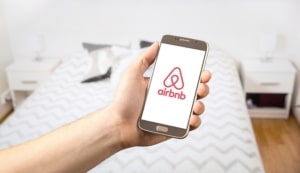Case Study #34: Printing Profits
 John MacInnes started Print Audit in 1999. He aimed his software at anyone who would normally charge people for printing costs, like law firms or schools. Those businesses were often very aware of photocopy costs, but not of direct printing costs, and the software Print Audit provided allowed those individual prints to be properly assigned and then billed to clients.
John MacInnes started Print Audit in 1999. He aimed his software at anyone who would normally charge people for printing costs, like law firms or schools. Those businesses were often very aware of photocopy costs, but not of direct printing costs, and the software Print Audit provided allowed those individual prints to be properly assigned and then billed to clients.
As time went on, Print Audit also put software in place to monitor ink and toner levels so that those companies with copier leases would experience less friction with service and refill calls. Instead of having to call up the service provider telling them that the machine was malfunctioning or that toner needed to be refilled, the software proactively notified dealers so that service interactions were enhanced and a lot of time and money was saved, by both the dealers and their customers.
Too Many Eggs in One Basket
The company was growing well, but a latent problem in their customer distribution forced them to make some drastic changes. One of their customers, Ricoh, was responsible for 70% of overall revenues, which was roughly $600,000 a month. Ricoh made a strategic acquisition and lost focus on this particular component (software helping to manage service calls) of their business. John noted that some of the people who were added to Ricoh during the acquisition were tasked to Print Audit, but they didn’t really know the company and in the meantime the $600,000 a month had plummeted to nearly $60,000 a month.
John had two insights: focus on the individual dealers rather than the corporate office, and switch to a subscription model. He did just that, not just making a better version of the software but making it a subscription service, and adding a number of key peripheral services that created a larger base of clients worldwide.
Focus on Retention
He also did something unexpected for a tech business: work on winning the retention game. As we discussed in an article about recurring revenue businesses, retention is a big part of success. John and his team made sure they were spending 80% of their time satisfying existing customers while spending the remaining 20% of time on adding features that would lure in new customers. At the time of acquisition, Print Audit had a 99.5% retention rate, so John figured if he wasn’t going to sell Print Audit, he might have another company in the stable: one that helped other companies improve their retention rates!
As it was, John had been building Print Audit for 20 years, originally on bootstrapped friend and family funds of $75,000. He saw that the industry was in consolidation mode, that there wasn’t room for too much more growth over time. Even though he had restructured the company in the aftermath of the decline of the Ricoh account, people were simply not printing as much as they used to… not simply because of the number of ways that paper was being saved digitally, but because of growing pressure for large companies to be more environmentally responsible, and printing on paper was one of those targeted areas.
Software as a Service
Interestingly, because he had transformed the company into a SaaS (software as a service) recurring revenue model, he became a smart strategic purchase for a large firm. While he says he wasn’t excited about the 2,000 items that he was assigned by the buyers for due diligence, he had a lot of support from his broker and banker to keep him on task and positively oriented towards a fruitful conclusion.
Key Lessons:
- Never be lopsided. While John was alert and talented enough to pivot his company while it was in the midst of a revenue free fall, he should never have allowed one customer to be 70% of revenues. Anytime any customer is more than 15% of revenues, you should be concerned and take the opportunity to diversify.
- Innovate in your space. While the copier and print industry was probably slow to change because of its high capital costs, John invested in improving his software when it already was an industry leader. That allowed him to grab even more uncontested market space.
- Don’t be afraid to own a category that isn’t a core competency. Customer retention of a subscription product wasn’t a core competency of Print Audit…until it was. John made it a priority, invested the people and resources in that direction, and the numbers say it all: 99.5% retention rate.

 He was ahead of the curve and was well-built, so he could have easily coasted for a few years and banked the profits. But Glenn knew that while business moves fast, tech businesses move even faster. Worse, if he didn’t sell, one of his competitors might, and then instead of the competitor he knew, he’d be dealing with an 800 pound gorilla that might be able to simply outspend him.
He was ahead of the curve and was well-built, so he could have easily coasted for a few years and banked the profits. But Glenn knew that while business moves fast, tech businesses move even faster. Worse, if he didn’t sell, one of his competitors might, and then instead of the competitor he knew, he’d be dealing with an 800 pound gorilla that might be able to simply outspend him. There are many occasions we’ve seen a quick sale over the years. One of the two factors that can often lead to one is having an exit strategy. The other? A health scare. While sometimes the health scare is genetic and unrelated to the business, very often conditions in the business manifest in some health condition, and this causes a re-evaluation of priorities, and often, a sale.
There are many occasions we’ve seen a quick sale over the years. One of the two factors that can often lead to one is having an exit strategy. The other? A health scare. While sometimes the health scare is genetic and unrelated to the business, very often conditions in the business manifest in some health condition, and this causes a re-evaluation of priorities, and often, a sale. While it’s still an issue of tension between state and federal governments, cannabis is the base of a booming nationwide industry. That means we’re already starting to see transactions in that space. While we can’t say we are experts in this space, we are watching it with interest and wanted to share a case study with you that will illustrate it isn’t as simple a road as any might lead you to believe.
While it’s still an issue of tension between state and federal governments, cannabis is the base of a booming nationwide industry. That means we’re already starting to see transactions in that space. While we can’t say we are experts in this space, we are watching it with interest and wanted to share a case study with you that will illustrate it isn’t as simple a road as any might lead you to believe. Today, everyone knows about
Today, everyone knows about  Some years ago, Jim Brown started a software company called TerrAlign. This Sales Territory Management Software designed the best possible territories for sales representatives. They started in pharmaceuticals, but quickly entered into the consumer goods and medical products sectors as well. They would eventually be acquired by a fellow software company, but that couldn’t have happened if Jim hadn’t started the process of replacing himself.
Some years ago, Jim Brown started a software company called TerrAlign. This Sales Territory Management Software designed the best possible territories for sales representatives. They started in pharmaceuticals, but quickly entered into the consumer goods and medical products sectors as well. They would eventually be acquired by a fellow software company, but that couldn’t have happened if Jim hadn’t started the process of replacing himself. Idiot Tax
Idiot Tax Anthony Amos started playing professional rugby right out of school in Australia. But he knew he couldn’t do that forever, and anxious to build something for himself, he decided to start a dog grooming business with his brother – and not just an ordinary one – but a mobile one called
Anthony Amos started playing professional rugby right out of school in Australia. But he knew he couldn’t do that forever, and anxious to build something for himself, he decided to start a dog grooming business with his brother – and not just an ordinary one – but a mobile one called  After law school, Diana House took some time off in Bali, Indonesia, where she discovered that people were fascinated with Mala beads – meditation beads used by serious practitioners of yoga. Sensing a blue ocean opportunity, she built a website and in the very first month of business she had paid for the website and had money in the bank.
After law school, Diana House took some time off in Bali, Indonesia, where she discovered that people were fascinated with Mala beads – meditation beads used by serious practitioners of yoga. Sensing a blue ocean opportunity, she built a website and in the very first month of business she had paid for the website and had money in the bank. Diana’s lack of engagement turned into despair about the business, and she started to see that her ego was goading her to sell the business because she didn’t want to be one of “those people” who shut down a business because she couldn’t find a buyer. But she realized that the mental anguish she was going through in being tied to something she no longer cared about was much worse, and she set a deadline of “sell or close down” by the end of August. It was August 1st when she made that decision, and on a whim, emailed her customer list letting them know she was planning to sell, but would have very tough deadlines to meet in order to close on time.
Diana’s lack of engagement turned into despair about the business, and she started to see that her ego was goading her to sell the business because she didn’t want to be one of “those people” who shut down a business because she couldn’t find a buyer. But she realized that the mental anguish she was going through in being tied to something she no longer cared about was much worse, and she set a deadline of “sell or close down” by the end of August. It was August 1st when she made that decision, and on a whim, emailed her customer list letting them know she was planning to sell, but would have very tough deadlines to meet in order to close on time.
